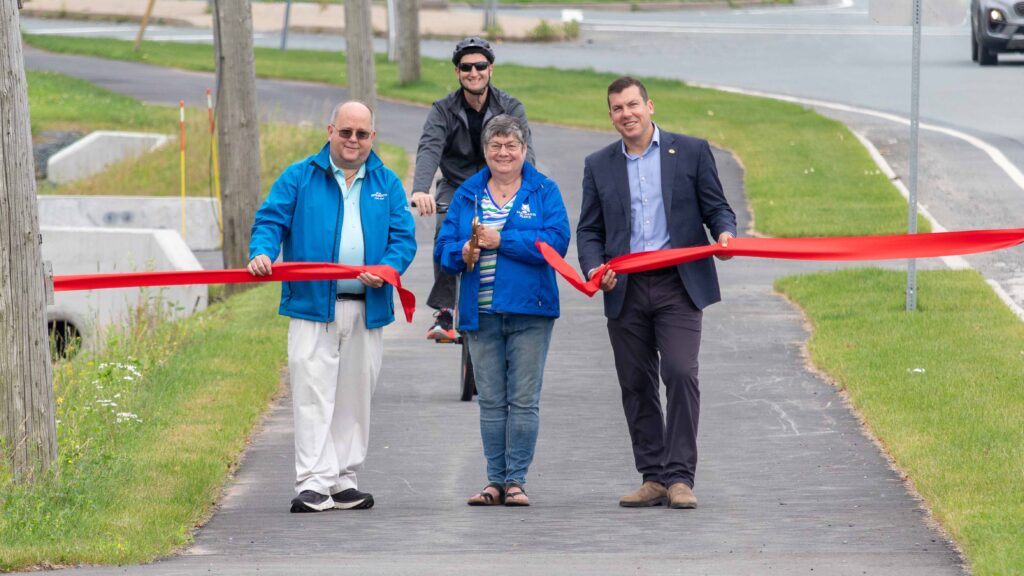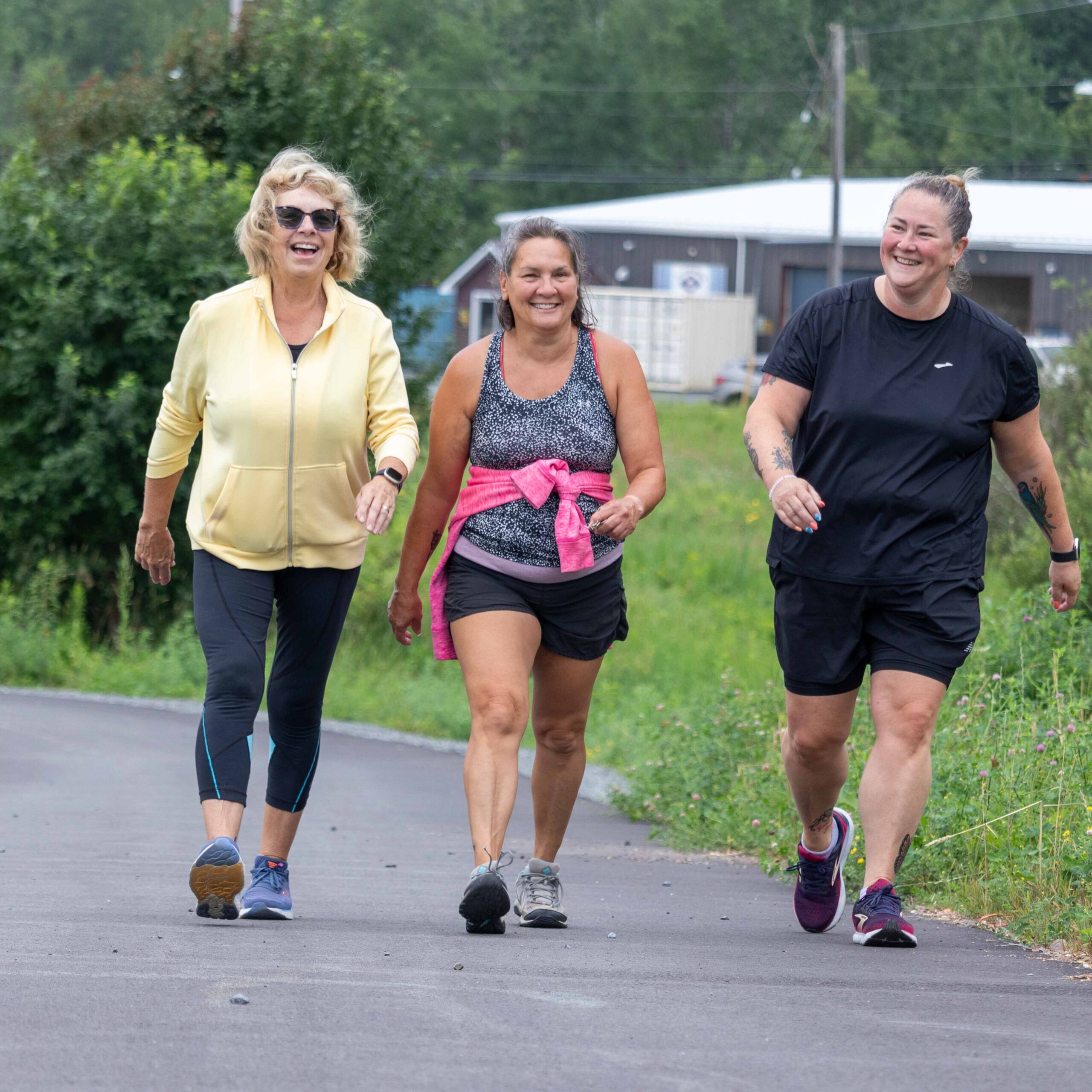New Active Transportation Pathways on Highway 214 Unveiled
East Hants has recently expanded our network of active pathways designed to make it easier for pedestrians and cyclists to access local businesses, services and Municipal buildings. In a significant step towards improving connections and supporting eco-friendly transportation, the new construction includes 120 meters of concrete sidewalk along Highway 2 and 830 meters of paved trail focused on Highway 214. This was a multi-year project, made possible through the collaborative efforts of multiple levels of government as part of the Climate Change Mitigation, a sub stream of the Investing in Canada Infrastructure Program (ICIP). The new network aims to create safer, more accessible and environmentally friendly transportation infrastructure for residents and visitors.

“We are pleased to have the support of both the provincial and federal governments as we continue to develop our active transportation network,” says Warden Eleanor Roulston. “It not only provides connectivity, but also a safe environment to enhance opportunities to promote physical activity while enjoying the great outdoors!”
The total project budget of $2,491,392 was supported through the following funding sources:
- Government Canada: $683,668
- Province of Nova Scotia: $569,666
- Municipality of East Hants: $1,238,058
“I am so pleased to see the completion of the Highway 214 Active Transportation Pathway and to take part in the official opening of this important community project, made possible by a Government of Canada partnership with the Province of Nova Scotia and the Municipality of East Hants,” says Kody Blois, MP for Kings-Hants. “I look forward to pedestrians and cyclists enjoying this new pathway as we continue to expand Active Transportation infrastructure in East Hants and communities across Kings-Hants.”
“I am pleased to be able to support the addition of this active trail,” says MLA John A MacDonald. “These trails help to connect our communities and ensure a safe place for all residents to be active.”
The new pathways make it safer to move from the entrance ramp to Highway 102 and connects the current sidewalks to the new developments in our community. They feature wide paved surfaces which can be shared by different types of transportation and special markings called ‘tactile walking surface indicators’ (TWSI) have been installed at defined crossing locations to help people with visual impairments navigate the area. New ‘shared pathway’ signage has also been implemented to improve pedestrian and cyclist safety.
We invite everyone to embrace these new transportation routes and join us in our commitment to building infrastructure that meets the needs of our growing communities.



